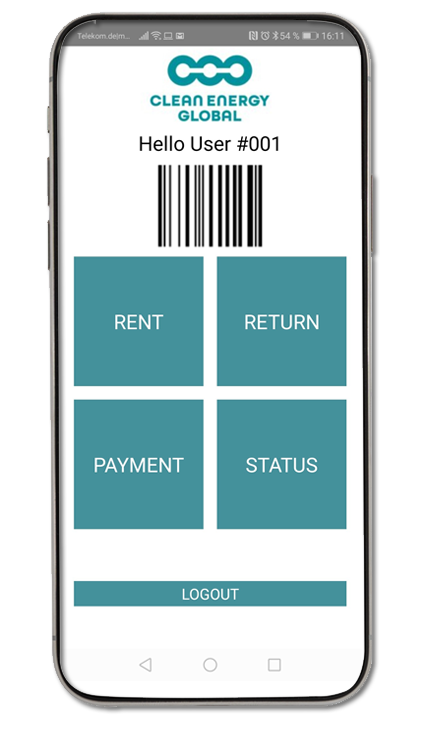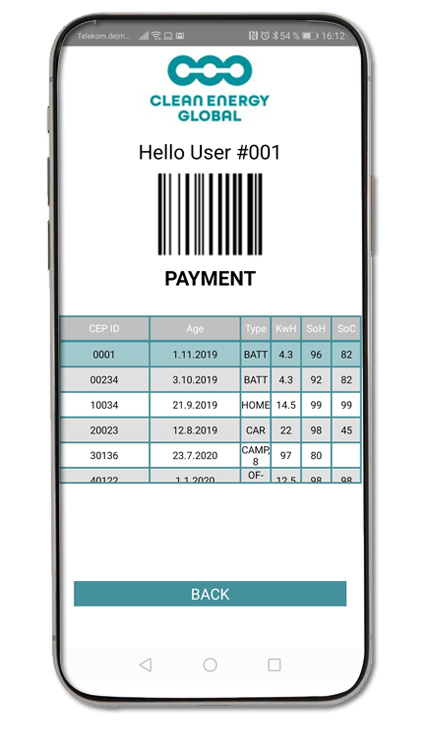Symbolic AI: The key to the thinking machine
The shell command in symsh also has the capability to interact with files using the pipe (|) operator. It operates like a Unix-like pipe but with a few enhancements due to the neuro-symbolic nature of symsh. By beginning a command with a special character („, ‚, or `), symsh will treat the command as a query for a language model. Building applications with LLMs at the core using our Symbolic API facilitates the integration of classical and differentiable programming in Python. These soft reads and writes form a bottleneck when implemented in the conventional von Neumann architectures (e.g., CPUs and GPUs), especially for AI models demanding over millions of memory entries. Thanks to the high-dimensional geometry of our resulting vectors, their real-valued components can be approximated by binary, or bipolar components, taking up less storage.
The AMR is aligned to the terms used in the knowledge graph using entity linking and relation linking modules and is then transformed to a logic representation.5 This logic representation is submitted to the LNN. LNN performs necessary reasoning such as type-based and geographic reasoning to eventually return the answers for the given question. For example, Figure 3 shows the steps of geographic reasoning performed by LNN using manually encoded axioms and DBpedia Knowledge Graph to return an answer. Knowledge-based systems have an explicit knowledge base, typically of rules, to enhance reusability across domains by separating procedural code and domain knowledge. A separate inference engine processes rules and adds, deletes, or modifies a knowledge store. It was the most affordable Computer Algebra System (CAS) of the time and I learned to program in that funky one liner programming language where I had to strip all the white space from my editor and always be careful to balance parenthesis.
As a result, LNNs are capable of greater understandability, tolerance to incomplete knowledge, and full logical expressivity. Figure 1 illustrates the difference between typical neurons and logical neurons. Henry Kautz,[18] Francesca Rossi,[80] and Bart Selman[81] have also argued for a synthesis. Their arguments are based on a need to address the two kinds of thinking discussed in Daniel Kahneman’s book, Thinking, Fast and Slow.
In the following example, we create a news summary expression that crawls the given URL and streams the site content through multiple expressions. The Trace expression allows us to follow the StackTrace of the operations and observe which operations are currently being executed. If we open the outputs/engine.log file, we can see the dumped traces with all the prompts and results. Since our approach is to divide and conquer complex problems, we can create conceptual unit tests and target very specific and tractable sub-problems. The resulting measure, i.e., the success rate of the model prediction, can then be used to evaluate their performance and hint at undesired flaws or biases. Additionally, the API performs dynamic casting when data types are combined with a Symbol object.
Deep learning and neural networks excel at exactly the tasks that symbolic AI struggles with. They have created a revolution in computer vision applications such as facial recognition and cancer detection. The advantage of neural networks is that they can deal with messy and unstructured data. Instead of manually laboring through the rules of detecting cat pixels, you can train a deep learning algorithm on many pictures of cats. When you provide it with a new image, it will return the probability that it contains a cat. OOP languages allow you to define classes, specify their properties, and organize them in hierarchies.
Neuro Symbolic Artificial Intelligence? – Definition from Techopedia – Techopedia
Neuro Symbolic Artificial Intelligence? – Definition from Techopedia.
Posted: Wed, 13 Oct 2021 07:00:00 GMT [source]
Looking ahead, Symbolic AI’s role in the broader AI landscape remains significant. Ongoing research and development milestones in AI, particularly in integrating Symbolic AI with other AI algorithms like neural networks, continue to expand its capabilities and applications. Symbolic AI has numerous applications, from Cognitive Computing in healthcare to AI Research in academia. Its ability to process complex rules and logic makes it ideal for fields requiring precision and explainability, such as legal and financial domains. With our NSQA approach , it is possible to design a KBQA system with very little or no end-to-end training data.
These operations define the behavior of symbols by acting as contextualized functions that accept a Symbol object and send it to the neuro-symbolic engine for evaluation. Operations then return one or multiple new objects, which primarily consist of new symbols but may include other types as well. Polymorphism plays a crucial role in operations, allowing them to be applied to various data types such as strings, integers, floats, and lists, with different behaviors based on the object instance.
Indexing Engine
Building on the foundations of deep learning and symbolic AI, we have developed technology that can answer complex questions with minimal domain-specific training. Initial results are very encouraging – the system outperforms current state-of-the-art techniques on two prominent datasets with no need for specialized end-to-end training. A neuro-symbolic system employs logical reasoning and language processing to respond to the question as a human would. However, in contrast to neural networks, it is more effective and takes extremely less training data. As I indicated earlier, symbolic AI is the perfect solution to most machine learning shortcomings for language understanding. It enhances almost any application in this area of AI like natural language search, CPA, conversational AI, and several others.
By re-combining the results of these operations, we can solve the broader, more complex problem. The Package Initializer is a command-line tool provided that allows developers to create new GitHub packages from the command line. It automates the process of setting up a new package directory structure and files. You can access the Package symbolic ai examples Initializer by using the symdev command in your terminal or PowerShell. It seems that wherever there are two categories of some sort, people are very quick to take one side or the other, to then pit both against each other. Artificial Intelligence techniques have traditionally been divided into two categories; Symbolic A.I.
In legal advisory, Symbolic AI applies its rule-based approach, reflecting the importance of Knowledge Representation and Rule-Based AI in practical applications. Neural Networks, compared to Symbolic AI, excel in handling ambiguous data, a key area in AI Research and applications involving complex datasets. Rule-Based AI, a cornerstone of Symbolic AI, involves creating AI systems that apply predefined rules. This concept is fundamental in AI Research Labs and universities, contributing to significant Development Milestones in AI. Logic Programming, a vital concept in Symbolic AI, integrates Logic Systems and AI algorithms.
Symbolic artificial intelligence
The universe is written in the language of mathematics and its characters are triangles, circles, and other geometric objects. René Descartes, a mathematician, and philosopher, regarded thoughts themselves as symbolic representations and Perception as an internal process. 1) Hinton, Yann LeCun and Andrew Ng have all suggested that work on unsupervised learning (learning from unlabeled data) will lead to our next breakthroughs. Symbolic artificial intelligence, also known as Good, Old-Fashioned AI (GOFAI), was the dominant paradigm in the AI community from the post-War era until the late 1980s. The future includes integrating Symbolic AI with Machine Learning, enhancing AI algorithms and applications, a key area in AI Research and Development Milestones in AI. Symbolic AI’s role in industrial automation highlights its practical application in AI Research and AI Applications, where precise rule-based processes are essential.

Improvements in Knowledge Representation will boost Symbolic AI’s modeling capabilities, a focus in AI History and AI Research Labs. Neural Networks’ dependency on extensive data sets differs from Symbolic AI’s effective function with limited data, a factor crucial in AI Research Labs and AI Applications. Contrasting Symbolic AI with Neural Networks offers insights into the diverse approaches within AI. Qualitative simulation, such as Benjamin Kuipers’s QSIM,[89] approximates human reasoning about naive physics, such as what happens when we heat a liquid in a pot on the stove. We expect it to heat and possibly boil over, even though we may not know its temperature, its boiling point, or other details, such as atmospheric pressure.
However, hybrid approaches are increasingly merging symbolic AI and Deep Learning. The goal is balancing the weaknesses and problems of the one with the benefits of the other – be it the aforementioned “gut feeling” or the enormous computing power required. Apart from niche applications, it is more and more difficult to equate complex contemporary AI systems to one approach or the other. These model-based techniques are not only cost-prohibitive, but also require hard-to-find data scientists to build models from scratch for specific use cases like cognitive processing automation (CPA).
Cognitive architectures such as ACT-R may have additional capabilities, such as the ability to compile frequently used knowledge into higher-level chunks. A more flexible kind of problem-solving occurs when reasoning about what to do next occurs, rather than simply choosing one of the available actions. This kind of meta-level reasoning is used in Soar and in the BB1 blackboard architecture. Time periods and titles are drawn from Henry Kautz’s 2020 AAAI Robert S. Engelmore Memorial Lecture[18] and the longer Wikipedia article on the History of AI, with dates and titles differing slightly for increased clarity.
The main goal of our framework is to enable reasoning capabilities on top of the statistical inference of Language Models (LMs). As a result, our Symbol objects offers operations to perform deductive reasoning expressions. One such operation involves defining rules that describe the causal relationship between symbols. The following example demonstrates how the & operator is overloaded to compute the logical implication of two symbols. Conceptually, SymbolicAI is a framework that leverages machine learning – specifically LLMs – as its foundation, and composes operations based on task-specific prompting.
New deep learning approaches based on Transformer models have now eclipsed these earlier symbolic AI approaches and attained state-of-the-art performance in natural language processing. However, Transformer models are opaque and do not yet produce human-interpretable semantic representations for sentences and documents. Instead, they produce task-specific vectors where the meaning of the vector components is opaque. A remarkable new AI system called AlphaGeometry recently solved difficult high school-level math problems that stump most humans. By combining deep learning neural networks with logical symbolic reasoning, AlphaGeometry charts an exciting direction for developing more human-like thinking. An LNN consists of a neural network trained to perform symbolic reasoning tasks, such as logical inference, theorem proving, and planning, using a combination of differentiable logic gates and differentiable inference rules.
Deep neural networks are machine learning algorithms inspired by the structure and function of biological neural networks. They excel in tasks such as image recognition and natural language processing. However, they struggle with tasks that necessitate explicit reasoning, like long-term planning, problem-solving, and understanding causal relationships.
And Connectionist A.I. The latter kind have gained significant popularity with recent success stories and media hype, and no one could be blamed for thinking that they are what A.I. There have even been cases of people spreading false information to diverge attention and funding from more classic A.I. Most important, if a mistake occurs, it’s easier to see what went wrong.
Hatchlings shown two red spheres at birth will later show a preference for two spheres of the same color, even if they are blue, over two spheres that are each a different color. Somehow, the ducklings pick up and imprint on the idea of similarity, in this case the color of the objects. Error from approximate probabilistic inference is tolerable in many AI applications. But it is undesirable to have inference errors corrupting results in socially impactful applications of AI, such as automated decision-making, and especially in fairness analysis. 2) The two problems may overlap, and solving one could lead to solving the other, since a concept that helps explain a model will also help it recognize certain patterns in data using fewer examples. Imagine how Turbotax manages to reflect the US tax code – you tell it how much you earned and how many dependents you have and other contingencies, and it computes the tax you owe by law – that’s an expert system.
If you wish to contribute to this project, please read the CONTRIBUTING.md file for details on our code of conduct, as well as the process for submitting pull requests. Here, the zip method creates a pair of strings and embedding vectors, which are then added to the index. The line with get retrieves the original source based on the vector value of hello and uses ast to cast the value to a dictionary. A Sequence expression can hold multiple expressions evaluated at runtime. Other important properties inherited from the Symbol class include sym_return_type and static_context. These two properties define the context in which the current Expression operates, as described in the Prompt Design section.
According to researchers, deep learning is expected to benefit from integrating domain knowledge and common sense reasoning provided by symbolic AI systems. For instance, a neuro-symbolic system would employ symbolic AI’s logic to grasp a shape better while detecting it and a neural network’s pattern recognition ability to identify items. The deep learning hope—seemingly grounded not so much in science, but in a sort of historical grudge—is that intelligent behavior will emerge purely from the confluence of massive data and deep learning.
This rule-based symbolic AI required the explicit integration of human knowledge and behavioural guidelines into computer programs. Additionally, it increased the cost of systems and reduced their accuracy as more rules were added. First of all, it creates a granular understanding of the semantics of the language in your intelligent system processes. Taxonomies provide hierarchical comprehension of language that machine learning models lack. So, if you use unassisted machine learning techniques and spend three times the amount of money to train a statistical model than you otherwise would on language understanding, you may only get a five-percent improvement in your specific use cases. That’s usually when companies realize unassisted supervised learning techniques are far from ideal for this application.
Symbolic AI v/s Non-Symbolic AI, and everything in between? – DataDrivenInvestor
Symbolic AI v/s Non-Symbolic AI, and everything in between?.
Posted: Fri, 19 Oct 2018 07:00:00 GMT [source]
NSCL uses both rule-based programs and neural networks to solve visual question-answering problems. As opposed to pure neural network–based models, the hybrid AI can learn new tasks with less data and is explainable. And unlike symbolic-only models, NSCL doesn’t struggle to analyze the content of images. For the first method, called supervised learning, the team showed the deep nets numerous examples of board positions and the corresponding “good” questions (collected from human players). The deep nets eventually learned to ask good questions on their own, but were rarely creative.
Deep reinforcement learning, symbolic learning and the road to AGI
Artificial systems mimicking human expertise such as Expert Systems are emerging in a variety of fields that constitute narrow but deep knowledge domains. Implementations of symbolic reasoning are called rules engines or expert systems or knowledge graphs. Google made a big one, too, which is what provides the information in the top box under your query when you search for something easy like the capital of Germany. These systems are essentially piles of nested if-then statements drawing conclusions about entities (human-readable concepts) and their relations (expressed in well understood semantics like X is-a man or X lives-in Acapulco). Next, we’ve used LNNs to create a new system for knowledge-based question answering (KBQA), a task that requires reasoning to answer complex questions. Our system, called Neuro-Symbolic QA (NSQA),2 translates a given natural language question into a logical form and then uses our neuro-symbolic reasoner LNN to reason over a knowledge base to produce the answer.
Kahneman describes human thinking as having two components, System 1 and System 2. System 1 is the kind used for pattern recognition while System 2 is far better suited for planning, deduction, and deliberative thinking. In this view, deep learning best models the first kind of thinking while symbolic reasoning best models the second kind and both are needed. Production rules connect symbols in a relationship similar to an If-Then statement. The expert system processes the rules to make deductions and to determine what additional information it needs, i.e. what questions to ask, using human-readable symbols.
Marvin Minsky first proposed frames as a way of interpreting common visual situations, such as an office, and Roger Schank extended this idea to scripts for common routines, such as dining out. Cyc has attempted to capture useful common-sense knowledge and has „micro-theories“ to handle particular kinds of domain-specific reasoning. Japan championed Prolog for its Fifth Generation Project, intending to build special hardware for high performance. Similarly, LISP machines were built to run LISP, but as the second AI boom turned to bust these companies could not compete with new workstations that could now run LISP or Prolog natively at comparable speeds.
Using the Execute expression, we can evaluate our generated code, which takes in a symbol and tries to execute it. However, in the following example, the Try expression resolves the syntax error, and we receive a computed result. The example above opens a stream, passes a Sequence object which cleans, translates, outlines, and embeds the input. Internally, the stream operation estimates the available model context size and breaks the long input text into smaller chunks, which are passed to the inner expression.
You can foun additiona information about ai customer service and artificial intelligence and NLP. Satplan is an approach to planning where a planning problem is reduced to a Boolean satisfiability problem. Getting some random laptop and figuring out what kernel mods to enable and hope that the specific chipset revision was supported, or maybe a patch available that might work was, in fact, a lot of bullshit to put up with to get, say, sound. I haven’t used Mathematica much, but I have a feeling that it’s still more symbolically powerful (or requires less wrangling) than SymPy?.
If the neural computation engine cannot compute the desired outcome, it will revert to the default implementation or default value. If no default implementation or value is found, the method call will raise an exception. Inheritance is another essential aspect of our API, which is built on the Symbol class as its base. All operations are inherited from this class, offering an easy way to add custom operations by subclassing Symbol while maintaining access to basic operations without complicated syntax or redundant functionality.
- Similarly, Allen’s temporal interval algebra is a simplification of reasoning about time and Region Connection Calculus is a simplification of reasoning about spatial relationships.
- Symbolic AI is a sub-field of artificial intelligence that focuses on the high-level symbolic (human-readable) representation of problems, logic, and search.
- Deep learning – a Machine Learning sub-category – is currently on everyone’s lips.
- It is great at pattern recognition and, when applied to language understanding, is a means of programming computers to do basic language understanding tasks.
- Better yet, the hybrid needed only about 10 percent of the training data required by solutions based purely on deep neural networks.
Backward chaining occurs in Prolog, where a more limited logical representation is used, Horn Clauses. The logic clauses that describe programs are directly interpreted to run the programs specified. No explicit series of actions is required, as is the case with imperative programming languages. Alain Colmerauer and Philippe Roussel are credited as the inventors of Prolog.
Acting as a container for information required to define a specific operation, the Prompt class also serves as the base class for all other Prompt classes. SymbolicAI is fundamentally inspired by the neuro-symbolic programming paradigm. We adopt a divide-and-conquer approach, breaking down complex problems into smaller, manageable tasks. We use the expressiveness and flexibility of LLMs to evaluate these sub-problems.
However, the progress made so far and the promising results of current research make it clear that neuro-symbolic AI has the potential to play a major role in shaping the future of AI. In general, it is always challenging for symbolic AI to leave the world of rules and definitions and enter the “real” world instead. Nowadays it frequently serves as only an assistive technology for Machine Learning and Deep Learning. We have provided a neuro-symbolic perspective on LLMs and demonstrated their potential as a central component for many multi-modal operations. We offered a technical report on utilizing our framework and briefly discussed the capabilities and prospects of these models for integration with modern software development.
Alternatively, vector-based similarity search can be used to find similar nodes. Libraries such as Annoy, Faiss, or Milvus can be employed for searching in a vector space. In the illustrated example, all individual chunks are merged by clustering the information within each chunk. It consolidates contextually related information, merging them meaningfully. The clustered information can then be labeled by streaming through the content of each cluster and extracting the most relevant labels, providing interpretable node summaries.







